Curtains To Caps: Starting A Sustainable Fashion Brand With No Experience
In this episode, we break down exactly how you can sell trash. OK, not trash trash. More like trash in the sense of that old saying – one man’s trash is another man’s treasure. That’s definitely the case for our guest, Adrien Taylor. Adrien joined us from New Zealand, where he runs a sustainable hat brand,Offcut, that uses discarded materials to create really, really cool hats.
Adrien walks us through how he first conceived of Offcut, how he launched the business with VERY limited resources and absolutely no knowledge of hats, clothing, or anything else that would suggest he launching a fashion brand was in his future.
No time? Here’s a five-point TL;DR version:
- The inspiration behind his sustainable fashion brand, Offcut, was sparked by his father’s curtain wholesale business
- You can’t tell if something is going to sell by just thinking about it. You have to just do it
- Today, the fear of missing out (FOMO) is what sells
- 采用开放的沟通政策和你的奥迪nce to keep them engaged
- Authenticity is key when incorporating social causes into businesses.
Start Yours播客是关于电子商务、dropshipping和艾尔l things launching a business.
Join us as we meet entrepreneurs who have gone through the triumphs and headaches of running an online store, and learn how they managed to survive and thrive.



The Spark Behind Offcut
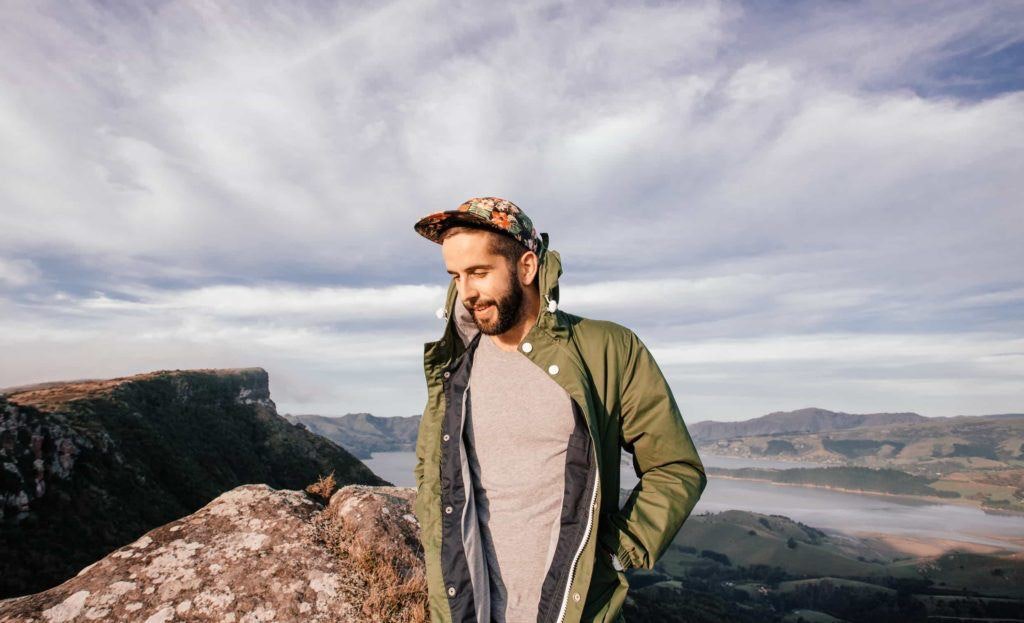
David:So, the light bulb moment that led to your sustainable fashion brand occurred, of all places, in your dad’s curtain warehouse. Tell us about that.
Adrien:Yeah, it was a few years ago now, 2015, I think it was. I went to dad’s curtain warehouse, and my father used to own and run a curtain wholesale business here in Christchurch in New Zealand. I’ve been there hundreds of times throughout my life. And I can’t actually even remember why I went there on this particular occasion, but I was there to see dad, I guess.
At some point in my time there, I walked past this room full of bits of fabric. And I just looked in there in passing and said to Dad “Oh, what’s this in here?” And he goes, “Oh, that’s all the kind of scraps, the end of lines, and the sample curtain fabrics that we can’t use anymore.”
I had a quick look through all these fabrics. There were lots of floral prints, and all these really, really cool patterns, stuff that I personally would never put on my windows in my house. But I looked at these fabrics and thought, “These are pretty cool.”
I said to dad, “So what? You just throw these out?” He goes, “Yeah, we have to pay someone a couple of times a year to pick them up and basically dump them into a landfill. We try to sell some of them, but most of it just ends up in a landfill.” And I go, “Well, can I do something with these? Can I buy them off you, Dad, and do something with them?”
And he goes, “Oh, you can’t buy them, but you can have them for free.” I said, “Okay, even better. Fantastic.” And that was the, yeah, the light bulb moment, I guess, where I thought, “Well, what do I do with these floral prints? These super, epic, really heavy-duty curtain fabrics?” And then it all went from there.
David:So you were a journalist at the time. You weren’t necessarily an obvious candidate to launch a sustainable clothing brand. Where did thebusiness sparkcome from? Had you had this entrepreneurial itch before or was it something that just dawned on you?
Adrien:Yeah, big time. I’d actually just finished up being a journalist, like earlier that year. I’d left my job in journalism because I knew that I wanted to get intoentrepreneurshipand I didn’t know what shape or flavor that would take. But I knew that’s what I wanted to do. I guess in journalism, you’re constantly meeting interesting people, interviewing them, and some of the most fascinating people I met were business people.
I’ve always loved business, since high school. I remember when I was 16 with my mate at the time, we tried to buy MacBook Pros and bring them into New Zealand and flip them for a few measly $100 margin profit, and that kind of thing. So we were always keen to do things like that.
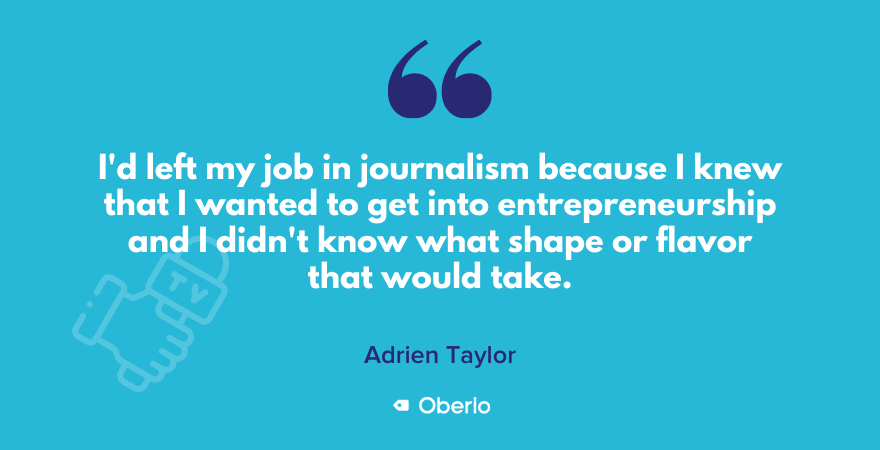
So it was 2015, I was 25 at the time, I’d been working in journalism for one of New Zealand’s two TV networks for about four years, and said, “All right, well now is the time to do it.” If you don’t throw yourself at it, I’ll be 35 by the time I go, “Oh, I really should have given it a go.”
So I’d been bouncing around with a few ideas, and had actually another little startup that failed. It was like a furniture, online furniture marketplace. When yeah, that kind of moment happened when I was at Dad’s warehouse and thought, “Yeah, well, maybe I could do something with all this fabric.”
From Journalism to Sustainable Fashion Brand
David:Did what was going on in the journalism industry dictate that you were gonna wanna get out of it? ‘Cause I have a lot of experience with journalism myself, and then it actually preceded me being in Oberlo. So I know all about the woes that are the journalism job landscape. Did that give you a little bit of incentive to get out?
Adrien:Yeah, for sure. Journalism’s not easy. It’s not an easy career at the moment, and I have a tremendous amount of respect for journalism and I think it’s incredibly important and I have a lot of friends who are still in the industry. But yeah, there was a lot of funding cuts and all that kind of stuff that were going on when I was there, and I thought, “I don’t wanna be part of a sunset industry, potentially.” What a terrible thing to say, so I thought, “Well, what can I do to ensure that I’m, yeah, not one of these people that’s always on the verge of the chopping block in the next round of redundancies?”
So that definitely was an incentive to move on. But as you say, I was the least qualified person in the world to start a fashion brand. I had no fashion degree, zero experience in fashion. As you can see, David, obviously we won’t be able to, thankfully won’t be able to see ’cause this is just an audio broadcast, but I’m by no means a very fashionable guy. So yeah, no, it’s funny that I went down this road.
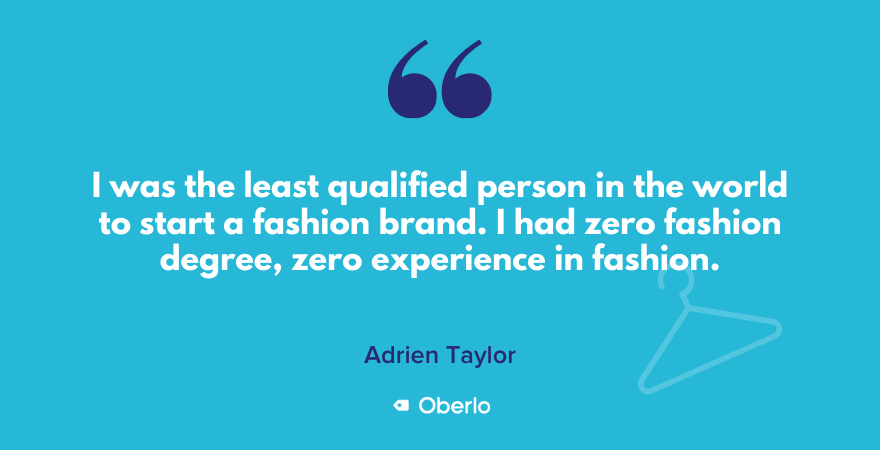
David:After this epiphany at the warehouse, you did a bunch of research about fabric offcuts and you realized, first off, that this wasn’t something unique to your dad’s curtain operation, that this was across lots of industries, there was a lot of wasted… Wasted offcut stuff, and then also, that your dad, and presumably other businesses as well, actually paid for these materials to be disposed of.
So this meant that you had a bunch of free materials that people would be happy for you to take off their hands. What you didn’t have though, as you just mentioned, was a background in fashion. And so how did you go about devising a plan about what you would create with this bounty of materials that you just discovered?
Adrien:Yeah, 100 percent, you’ve absolutely nailed it. So after that encounter at my dad’s place, I did a bit of research and was just blown away by the figures that I was reading. Up to 20 percent of all fabric in the garment industry is thrown away as offcuts. So every time that they cut out the t-shirt that you’re wearing, I don’t know, Guns and Roses t-shirt or whatever it is, up to 20 percent of that fabric gets thrown away, ’cause it’s just the offcuts, obviously the bits that are too small to turn into something else.
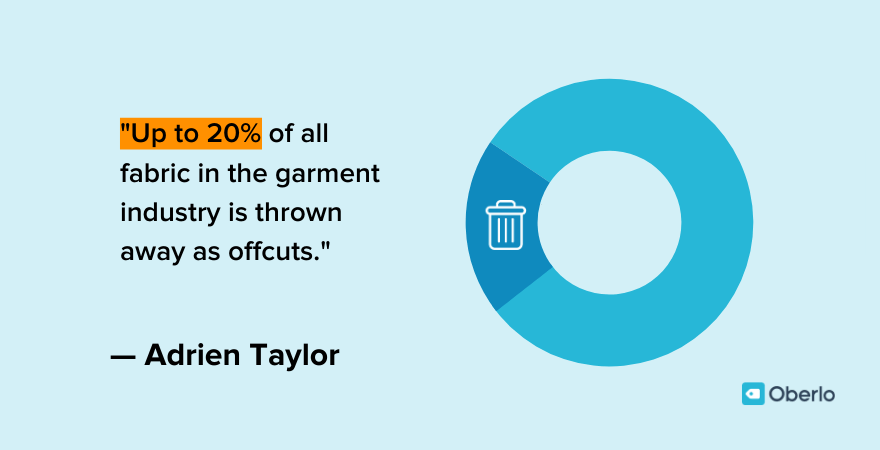
And so as I was reading this, I thought, “Okay, well, how can I actually use these offcuts in a meaningful way? And what are the, I guess, design constraints that I’ve got in using offcuts?” And from there I thought I have to make something that uses small pieces of fabric. If you’ve got a couple of t-shirts laid out on a big fabric machine that’s being cut out, and you can picture roughly what the size of an offcut might be.
So, okay, what kind of product could I make using small bits of fabric offcuts and I think I told you the idea of bow ties which is obviously an interestingniche.But then I thought, well caps are small. It had to tick a few boxes for me, because I didn’t have any experience in fashion, and I knew that I wanted to be basically online only, I didn’t really wanna get into the brute of wholesale and all that kind of stuff.
So I thought I want to sell a product that someone can buy online and know exactly what they’re getting, and also not have sizing issues, gender, like male-female issues.
I wanted something that was unisex, no sizing issues, and something that everyone knows. When you buy a cap, you know what a cap is. There are no issues when you’d get it and something that fits the bill, to be able to be made from these small bits of fabric, these offcuts.
And then yeah, caps kind of came to my mind and it all went from there. And before that point, I never even really wore caps, to be honest. I maybe had one or two laying around that I’d wear from time to time, but that was that. And then I did what every entrepreneur probably starts with, a couple of Google searches, “Cap manufacturer in New Zealand.”
We are a small country, there weren’t too many options. Maybe I had to contact two or three potential leads and eventually one of them said, “Yep, you can get your samples made here.” I got, I don’t know, maybe 100 samples made.
I scraped together some cash with my friend at the time and got about 100 samples made, and brought them to my doorstep, and sort of all went from there and got some photos and then thought… All right, now I need to start selling these things.
Sustainable Branding 101: Invest in Marketing
David:You said you scraped together some cash, and I wanted to ask you about this initial investment that you made. We don’t need an exact dollar figure if you don’t wanna give it, that’s fine, but I think spending any amount of money on something where there are no guaranteed returns can be a freaky experience.
The first time that I launched ads for mydropshipping storelike that 20 bucks on these Facebook ads, that was a white-knuckle experience for me. And so, I know things can get real once it goes from cool idea to research, to like, “Oh, wait now I need to pull out my wallet.” What was that like once you started putting money on the line?
Adrien:Yeah, 100 percent, and I didn’t have a lot of money at all, at the time, I just finished journalism, a pretty poorly paid job. I was back living with my parents when all this started because I pretty much couldn’t really afford anything else. And it was Matt, who’s still a really good friend, but he was the co-founder at the time. We got together and were discussing all this.
I think in the end we probably put in about one to two thousand New Zealand Dollars each, so that’s probably $800 to $1500 US Dollars each, so it was by no means a large sum of money.
But like I said, when you don’t have a lot of money, you’ve got absolutely no guarantee, and you’ve got 100 caps in your bedroom at your parent’s house, and you’re going like, “Right, I have to sell these things to not look like a complete muppet.” It is definitely, yeah, it’s definitely like a sink or swim kind of moment, but you just have to do it. You’re never gonna work out whether they’re gonna sell by thinking about it and not doing it.
You just have to, like you said, pull out your wallet and put your money where your mouth is and give it a go. And what I found is that your immediate friends and family who are generally gonna be your first supporters are so supportive. And we were having barbecues, this is all around Christmas time, and we’d have barbecues in my parents’ house, and friends and family would turn up and they would all leave with a cap that they'd bought off me. So yeah. You just need to get out there and start hustling.
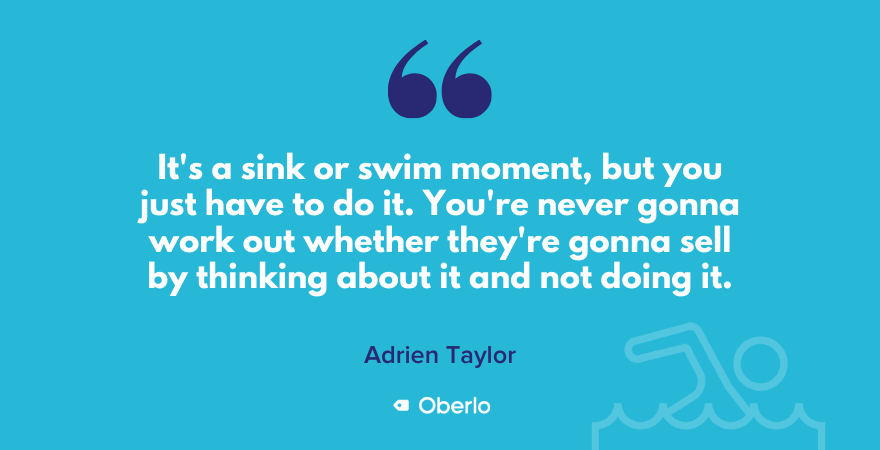
David:So mom and dad were cool with you becoming a cap entrepreneur?
Adrien:是的。They were a bit confused over the fact. They’ve kind of learned, over the years, not to question too much of what I do. Because they can’t really keep up, but no, they were fully supportive. So I was very, very lucky.
David:是的。所以你投资的钱,这是专项for manufacturing the hats and not for marketing the hats, and the marketing side of things is where you might have to cut some corners and try to save, ’cause you’ve already invested in the manufacturing as you mentioned. So with these budget restrictions and with knowing that, the money you could afford to spend was gonna be spent elsewhere. What was the approach tomarketing?
Adrien:I was really lucky in those days where I think it was the golden era ofInstagram.Where just having good content on Instagram and just being super active and commenting and following people, and all that kind of stuff got you a pretty strong audience pretty quickly. And I was able to do that to get a really quick audience. Yeah, really, really good traction at least in New Zealand, very quickly.
And that was just thanks to the stage of which Instagram was at. The organic reach was massive and all that kind of stuff, so we didn’t really have to spend a cent.
We gave away a few caps toInstagram influencersand all that kind of stuff. Not a hell of a lot, because we didn’t really have the means to give away a lot.
I think that was reasonably effective. It’s always a bit hard to measure, as anyone would tell you, unless you’re using discount cards and all that kind of stuff. Obviously, there are ways to measure it, but yeah, there’s not much of an incentive to get 10 percent off on a $50 volume, in the US Dollars a $35 hat, or whatever. So, yeah, we sort of toyed around a few things.
There was no realpaid marketingas far I can remember in the early days, apart from maybe the odd boosted Facebook post or whatever, it was all pretty organic, to be honest.
And the whole method was because using offcuts limited us in the number of hats that we could produce and the number of styles, instead of trying to ignore that or be like a normal retail store, we thought, let’s just embrace that, and do these limited monthly drops.
And we’ll spend every day between the drop justcollecting email addresses, getting people to sign up to our members list, and then releasing these drops to the members first. And I think that sense of exclusivity, really, really helped us. Yeah, I always used to say that the old adage in marketing is that sex sells. But I think that sex may be used to sell, but now it’s kind of lost its potency. I reckon now, fear of missing out is what sells. If you tell someone, “Oh, you can’t have this,” then they go, “Well no, hold on, I want it now, I really want it.”
David:FOMO is the new sex.
Adrien:Exactly, that’s what I reckon. That’s exactly what I reckon.
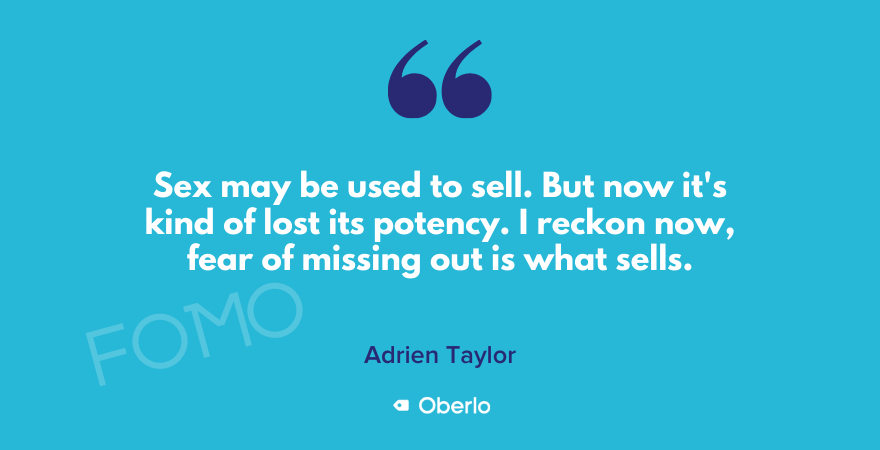
Instagram for Sustainable Fashion Brands
David:So we actually have astory about Offcuton the Oberlo blog, which everybody listening should be sure to check out at Oberlo.com. And you talked about this golden era of Instagram in there as well, and if we’re talking about 2015, 2016 as this golden era, then the suggestion there is that we are no longer in the golden era, and that things have changed, and that now there’s maybe some strings attached.
Can you talk about howInstagram as a marketing channelhas evolved, and the advantages and the drawbacks that you’ve seen, having been in there pretty early.
Adrien:Yeah I think there’s still obviously a tremendous market.
The audience size is bigger than it’s ever been on Instagram. So obviously there’s still a huge opportunity.
I guess it was potentially a golden era for dirt-bags like me, who had no money. Using the channel as much as possible through organic reach. Now, obviously Facebook wants you to pay for anyads reach on Facebook, and on Instagram, which is fine. I can understand that it is a shame for entrepreneurs. It has made it a bit more difficult.
But I think also, it’s not all bad. I think it’s lifted the quality of content that people have to put out there. And although maybe we were in a golden era five years ago of organic reach or whatever, we’re probably in a golden era now of… Every man and his dog can produce amazing content on their own phone if they take the time to do it properly. So, yeah, the barriers to entry forcreating great contenthas obviously just almost totally evaporated, which is great.
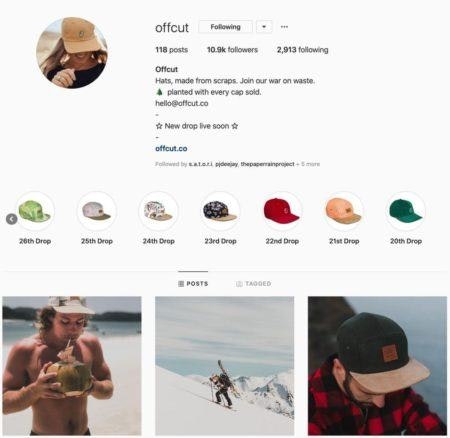
所以我认为它只是把每个人的游戏,我n terms of… Just the best content gets to the top. Whereas maybe five years ago, our content was always good. But it was possibly not as important as just having a cool story and having a few staunch advocates who would put you in public, and then you’d kinda get quite a good following, which I think these days, it’s just a bit harder without having stacks of cash. Obviously, if you got stacks of cash then everything’s easy.
David:Right. Solves a lot of things, having stacks of cash.
Adrien:Yeah, it does, yeah.
Putting a Good Spin on Limitations
David:The first batch of hats sold, as you said, and there was, I think, probably a sense that… Okay, there’s a proof of concept here. We can go from scrap-heap to manufacturer, to Instagram, to customer, and that this is a cycle that works.
But then you ran into the problem of figuring out how to replicate this because just given the quirky scrap-heap business model that you’d cooked up, you’re kind of handcuffed because you have to use whatever is on the floor. And so, this introduced another problem, where you could make a bunch of cool hats, but you couldn’t make infinite cool hats of that design. And so you mentioned the word drop.
Talk, if you would, about how you took this challenge of having restricted designs just because you had to play with what you had in your hands. This restriction turned into a positive and how you generated hype around these drops.
Adrien:Yeah, 100 percent. I think every… No matter what business you are in, every limitation is an opportunity to just embrace it and go, “No, no, well that’s our point of difference.” I can’t think of any other examples off the top of my head. But as you say, we were faced right from the start with this reality, where our first hat that we released, or one of the first ones, was this awesome black cap with white flowers on it, and it was super popular. It was the one that everyone wanted.

People were asking us to make it again. But we couldn’t because all that scrap fabric from my dad’s curtain warehouse had gone.
So, instead of trying to find more of that or whatever, or losing our whole purpose of being, and going to Dad and say, “Hey, can I just buy some of this new fabric off you?”, which obviously we would never do, we sort of said, “How do we just embrace that, and go, that’s our point of difference.” And that’s just by telling people, “Once it’s gone, it’s gone.” And we’d put numbers on how many hats we were making. So at the start, we were saying, “Look, there are only fewer than 30 of these hats.” And then that would go up to less than 100, or whatever. But people really liked that.
They liked the idea that if you buy a hat from Offcut, the chance of seeing someone else wearing the exact same hat on the street is virtually nil.
And that’s a point of difference, like I was saying before, of having that kind of FOMO factor that people love.
Having an Open Communication With Your Audience
David:It’s cool that you turned this negative into a positive. It kind of gave you a way to gin up hype. But an extension of this is that whatever hat you launch next might miss the mark with some potential customers. Some might love it, but some might not love it, and that raises the next challenge which is that you need to be able to re-engage with people who weren’t digging the last release.
And so, this would put a lot of stress on your ability to engage, whether it’s withsocial media marketingor email or whatever channels you use, with this kind of built-in pressure that you need to keep people engaged because of the evolving designs? How did you navigate that?
Adrien:Yeah, it’s a very good question. I mean, yes, absolutely, there were some hats that were supremely popular. And the funny thing is that you’d think after five years I’d be able to pick it. I still can’t. I’ve got a pretty good idea, I think, now, as to which fabrics are gonna do reasonably well and those that won’t, and we’ll just not use those ones that won’t. There’s an abundance of them, so we have to be quite picky.
But sometimes I still get it wrong where I think, “Oh yeah, that’s a pretty cool hat, I think it’ll do okay,” and it just disappears straight away. Whereas there are other ones where I think, “Oh, this is cool, this is the one that I want.” They don’t move as quickly. I think one way to kinda get through that, and something that I’d recommend to anyone listening is in this day and age with social media, everyone is obviously hyper-connected. Just have an open communication with yourtarget audience, with your customers. So we’d quite often say, “Hey guys, what kind of styles do you want to see and should we keep an eye out for in the scrap heaps this month?” Or whatever. And people love that, people feel like they’re having an active role in the designs that your company is putting out. I mean…
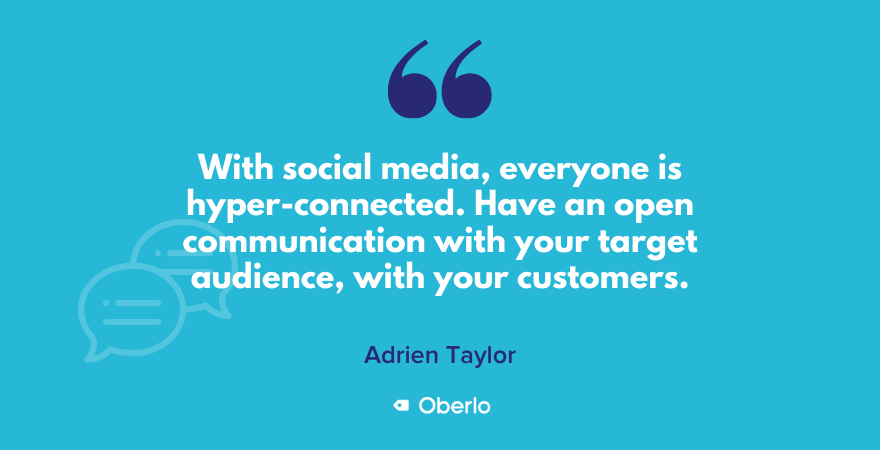
David:Yeah, co-designer.
Adrien:Yeah, that’s… How epic is that? People absolutely love that and you do it totally openly. We do it on Facebook comments and all that kind of stuff, not trying to be secretive or hide anything, we just ask people and people love being involved.
David:Is that something that you do yourself, or is it something that yououtsource to virtual assistants?
Adrien:I still do all the social media myself. Yeah. I think it’s a really important thing. I mean, I did try and outsource it for a bit last year, and it’s one of those things, I just wasn’t happy with what the company was doing.
They didn’t really quite get the tone of voice that I had. And for better or worse, Offcut is quite sort of tied to me as an individual, at least here in New Zealand and so it is my baby, it’s a very personal thing.
And when you see these posts come up that you didn’t write, yeah, I kind of pretty quickly took control back.
在可持续发展的挑战
David:Yeah, so there is an environmental angle to Offcut. You’re taking stuff that would otherwise end up in a landfill and reusing it. And you were definitely involved with the environment before Offcut. We talked about journalism, you were an environmental journalist. And so it’s not like you just woke up one day and all of a sudden realized that something was weird with the climate. So you genuinely care.
That said, I think that there is a commercial appeal to sustainable fashion brands that you’ve tapped into and that you’re able to utilize. And I don’t think that these things are contradictory and I don’t think it’s cynical to say thatsustainability can sell.I think it’s awesome, actually.
I’m curious if you could talk about how you’ve incorporated the cause into your sustainable fashion brand, and if you have any thoughts on how somebody listening might be able to do that as well, whether its climate, or hunger, or female empowerment, or stray dogs, whatever. Yeah, this merger between, you know,social causesthat can get people really excited and really cool products.
Adrien:是的。I think it’s… I think it’s super important that whatever you do, you have to genuinely feel very passionate about it. I think where a lot of people go wrong is they go, “I want to start a business, I want to make a heap of cash. I should probably do something that’s gonna make me appear nicer. I should probably do something for society,” or whatever that’s gonna sell a few more t-shirts or whatever, or seem quite nice, as an afterthought. And I think that’s where possibly a lot of people go wrong and there’s a lot of greenwashing out there.
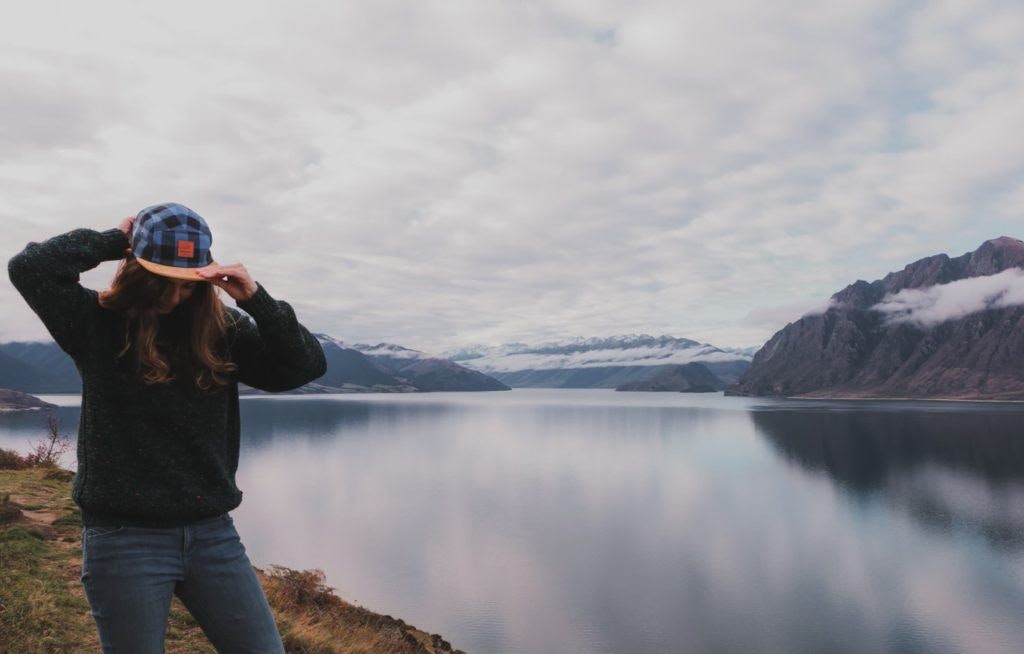
It’s a very valid question that you need to ask yourself, and it’s something that I ask myself a lot. It’s like, “Am I better off turning these scrap fabrics destined for the landfill into hats and then still fundamentally… ” There’s obviously a carbon cost with manufacturing and there’s theshipping costand all that kind of stuff, am I better off doing that and then still making a product for someone to buy, or I’m better off just not doing anything? Like do people need more caps? And a couple of years ago, we were taken in by the companyAllbirds.
David:Another New Zealand outfit, right?
Adrien:是的。Yes. So co-founded by a Kiwi guy, Tim Brown, who I’d met a few years ago when I was a journalist. Super nice guy. I told him all about Offcut, and he’s like, “Mate, come spend a week in San Francisco at Allbirds and see how we do things over there.” And we had this chat with their head of sustainability a couple of times and she was like, it’s a difficult one because you go… You’ve got some clients, some customers of theirs who will be buying like 10 pairs of sneakers and she’s like, “That’s great.”
But then withsustainabilityobviously there’s a big conflict there. No one really needs to be buying 10 pairs of sneakers, and we’ve got super fans of Offcut, maybe the top ones probably bought 25 hats over the years. But then she said, and I thought this was really good as well, she goes “Look, the reality is you’re always gonna have sneaker-heads, you always gonna have people who love caps who are going to buy 50 of them regardless. So if you can provide the best, most sustainable option to them, then that is a win.”
And I guess that’s the kind of philosophy I’ve taken with it. I just go, “Look, Offcut is by no means perfect. We’re still manufacturing things.” Caps actually have obviously a practical purpose of protecting your face from the sun, which is great. Obviously, for 90 percent of people, they are a fashion item, so it’s debatable as to whether they’re very necessary, so whether producing them and shipping them around the world is a net benefit or a net cost to the environment, even though we’re taking those scraps of fabric.
但是我想that is a good way to look at it, is to go, “Well, if people are gonna buy caps, we just want to provide the most sustainable option available to them.”
I don’t know if that really answers your question. But it’s just kind of an internal sort of debate that you kind of have to ask yourself and I think to anyone who does want to start a sustainable brand with a kind of social / environmental cause, it has to be authentic. I started it genuinely because I saw this heap of fabric and I was like, “I don’t want this fabric to go to the landfill, I think that’s ridiculous.” And I think that authenticity is at the heart of the company, and people buy into that. But they wouldn’t buy into me saying, whatever, if it wasn’t sort of authentic and it was an afterthought.
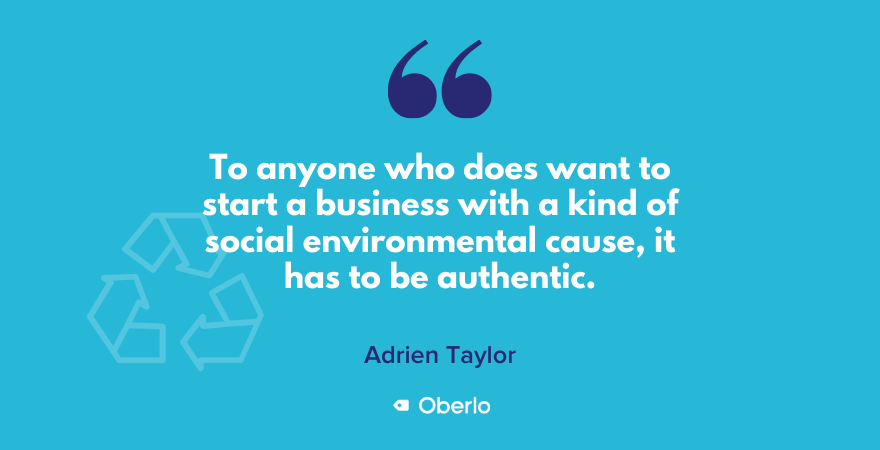
Baking Sustainability Into Your Business
David:Yeah, that’s something that we’ve heard. We’ve written about that on theOberlo blog, about this marriage between causes and business, and we got some really good answers from Harper Wilde, theysell bras online.They do a lot of stuff with female empowerment. And so, yeah, there are examples across the board.
So it’s like I said, I don’t view this at all as some sort of cynical wink-wink business, like “Hey, we’re gonna talk about the environment and then make a bunch of products.” The way that you do it and the way that a lot of businesses do it, it’s legit, it’s not greenwashing, it’s a net gain. So, I think it’s very cool to be able to tie that stuff together.
Adrien:And conversely I mean, I don’t think there’s anything wrong, there’s nothing wrong withstarting a businessjust to make a good business. So, if you’re not into social enterprise, I reckon, don’t pretend to be. Be authentic in that sense. If you just make a good product…
One thing I feel strongly about is whatever it is you do, if it’s selling products, don’t make crap that is gonna break or that people don’t need.
You don’t have to be a social entrepreneur to go, “Actually, I’m just gonna try and make the best product that’s gonna last the longest time possible,” and that way if people wanna buy this product, then they’re buying something that is high quality and that isn’t gonna break and that is a big win, I guess, for the environment as well. But not everyone has to be a social- or environmental-first organization, and that’s totally fine as well.
The Freedom and Flexibility of Entrepreneurship
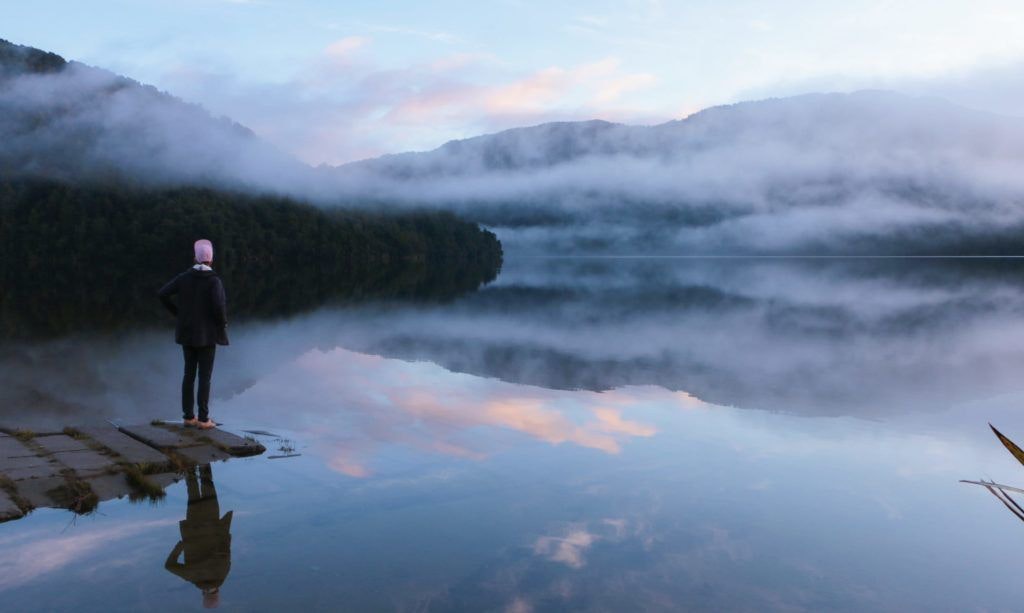
David:Offcut isn’t the only thing that you’re into. You have a design studio job and then you also have a business that films weddings. And I’m curious what it is about this way of living that appeals to you, where you’re doing a lot of different things?
I don’t know if you’d call it “side hustles“ or “scrappy”, whatever the noun is. What is it about that that’s cooler than… Because you’re a sharp guy. You could have a normal job, I reckon, just doing something real, by the book, standard, comfy. You seem to have turned your back on that. What is it about this that appeals to you?
Adrien:I guess I assume it’s what every entrepreneur loves is a couple of things for me. It’s the, I would say freedom. But I don’t know if that’s the first thing. I think it’s just the sense of satisfaction you get from building something from the ground up. Yeah. Just the satisfaction of starting something from absolutely nothing. I love that. I absolutely love that.
I find it super exciting getting up in the morning and going, “Well, whatever I create today is totally up to me.” I’m not accountable to anyone else. No one’s gonna care if I am super successful or if I completely fail this year. I’m onlyaccountable to myself.And for me, I’m a pretty independent person. I love that. I love that sense of being able to create something from nothing and it affords you a tremendous amount of flexibility and freedom, which I love.
Obviously, the downside of that is there are highs and lows. In the early years of any new venture that I’ve been involved with anyways, there are probably more lows than highs, but eventually, there are as many highs as there are lows. And then eventually, there are more highs than there are lows.
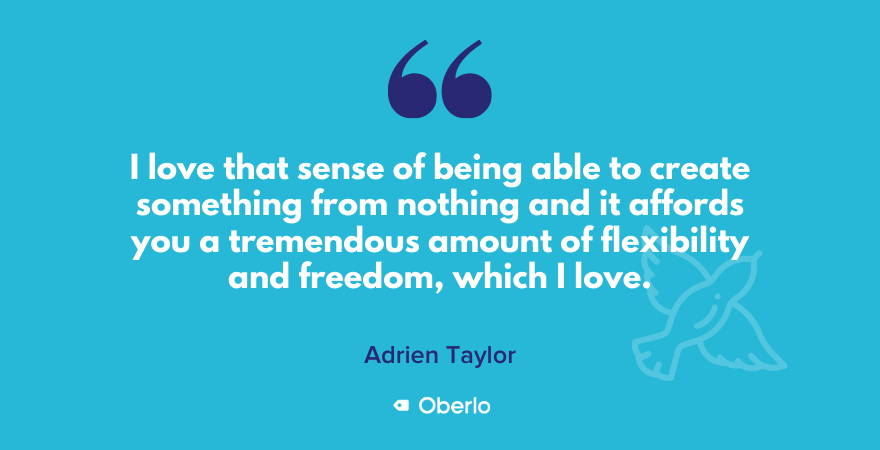
Yeah, it’s a bit of a roller coaster of a ride, but I love it. And I think I’ve got a lot of varied interests, and I have done desk jobs before and just always found that I eventually get a bit bored, so it’s just not really for me. Having the flexibility of being able to work on my own terms is definitely the way I like to do it, and a small example of that is I live by the beach here and…
David:Not at Mom and Dad’s anymore?
Adrien:No. Not at Mom and Dad’s anymore. No, I’ve graduated out. I had to sell a few caps to get there but I managed to get there.
Butmy day does not work like anine to five office job.我会做几个小时从9到每当我feel like it. Then I’ll shoot off for some rock climbing or surf if the weather’s good and the swell’s good.
And then I’ll often work until midnight, one o’clock and that works for me. So, I think it’s definitely a lifestyle that suits certain personality traits. Others prefer the kind of structure and the safety of having a set income. Yeah. It’s just not my jam.
David:All right, Adrien. We can leave it there. I really appreciate you taking the time to chat. Again, for anybody who wants to check out Offcut, you can find them online atOffcut.co.Then, of course, they’re on all the social channels that you’d expect. Once again, Adrien, thanks so much.
Adrien:Thank you so much for having me, David.


